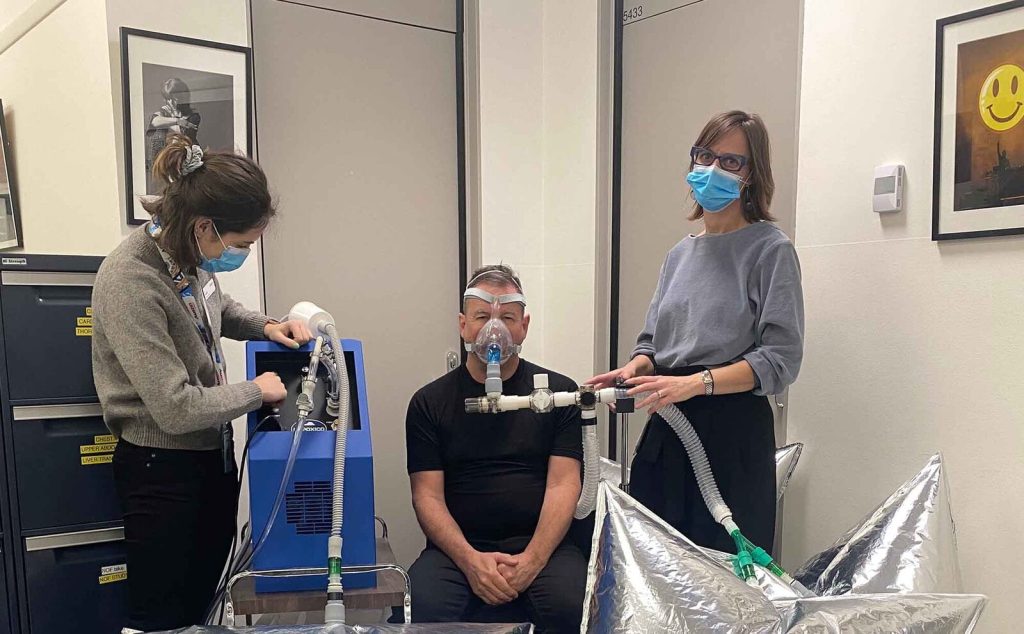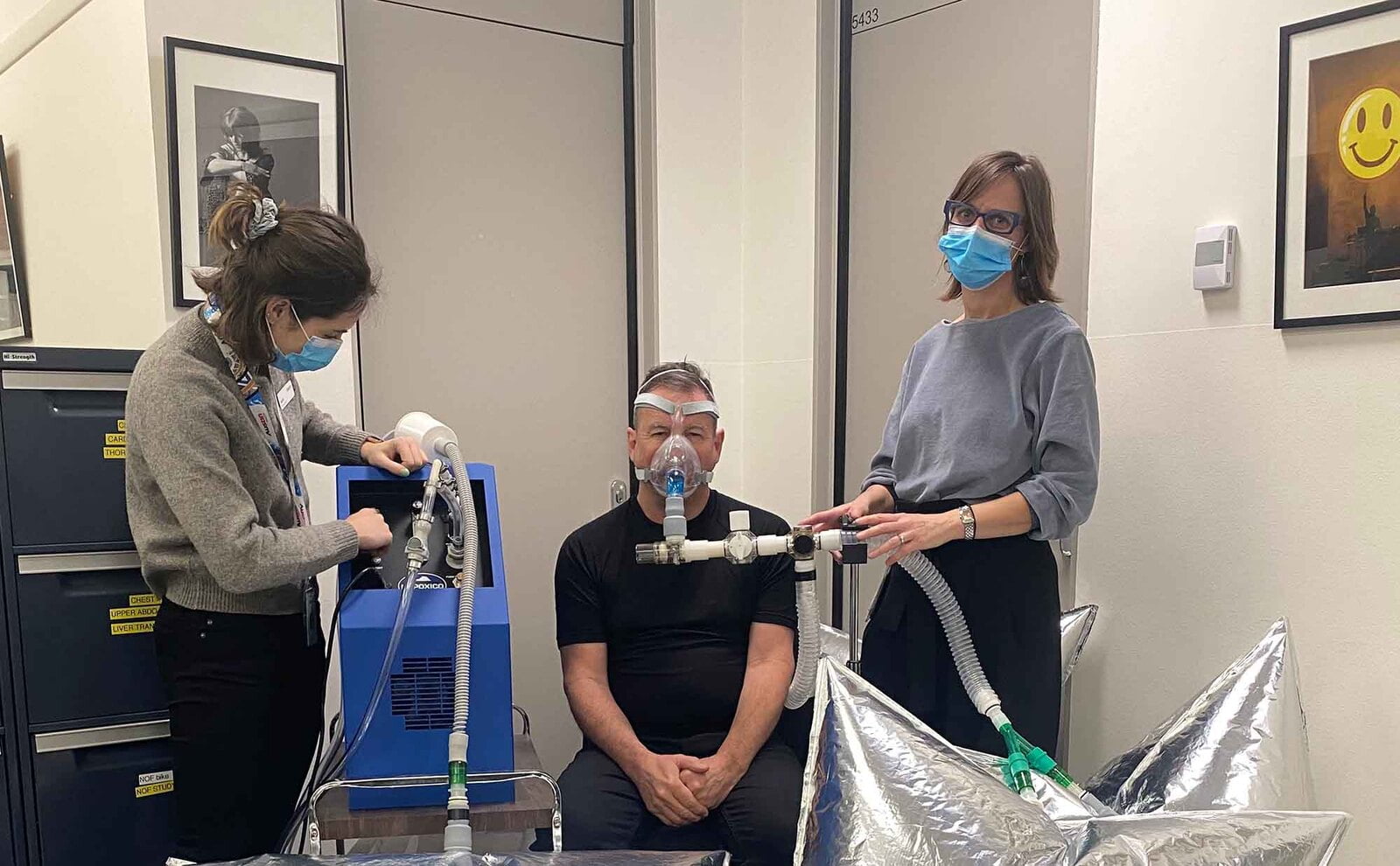Story By Dan Nathan
Physiotherapist and researcher Dr Nicole Sheers has been working on an exciting research project, and she needs your help. The project is exploring the potential of therapeutic acute intermittent hypoxia to improve upper limb function in people with incomplete spinal cord injuries. Therapeutic acute intermittent hypoxia, or tAIH for short, is a process by which a person breaths alternating doses of normal air, and low-oxygen air repeatedly, for a set period of time. Severe hypoxia is detrimental, but brief, one-minute periods of moderate intermittent hypoxia, interspersed with normal air over a 30-minute period, is safe and appears to be beneficial. This dose of low-oxygen air is equivalent to being on top of Mt Kilimanjaro or higher, and leads to a temporary and mild fall in blood oxygen level, that in turn stimulates the nerves responsible for breathing and induces neuroplasticity. Neuroplasticity is a broad term. It could mean one section of the brain slowly learning the functions of another section that has been damaged in a stroke. Or, in this context, it’s about encouraging the spared nerve pathways (in someone with an incomplete SCI) to re-organise and strengthen their neural connections. This strengthening improves signals from the spinal cord, which enhances functional capacity.
So, where do you come in?
Nicole and the team need volunteers for an upcoming trial. They’re looking for people with an incomplete SCI, who are at least one year post-injury and under the age of 50. “The research is still in its infancy,” says Nicole. “Studies have shown that this therapy improves breathing in animals with SCI for weeks after the last treatment session. A handful of studies out of the United States with small numbers of people with a long-standing SCI have also suggested benefit with tAIH. Our trial will be the first time this therapy has been pursued in Melbourne.” So far, Nicole says, most of the studies have looked at this therapy’s effect on breathing muscles, ankle strength, and body weight supported walking training. A few, including this one, also look at the effect on upper limb function. “The SCI community has said that improving upper limb function is one of the key therapeutics that people are looking for. We think this study is really important, because not only are we looking at tAIH alone, but we are also testing the effect of combining tAIH with exercise training.”

Nicole sees those combinatorial effects as potentially significant. “The latest animal studies suggest that combining therapies might result in larger or longer-lasting improvements. The theory is that breathing low-oxygen air before exercise training acts as a primer, to enhance the effects of rehab.” So, if all goes to plan, how far off is this therapy from becoming widely available in the community? Don’t hold your breath, says Nicole, it could be five years. The results from this trial will inform the dosage regime and approach that’s used in the next stage of the research process – a bigger trial known as a phase three study.
Research trial details
This research trial is being undertaken by the Neuroscience Research Australia (NeurRA) institute in Sydney, and the University of Melbourne team at the Austin Hospital in Melbourne. The aim is to gather between 20 to 40 people living with an incomplete SCI for a two week trial. Half of the study participants will be asked to do two weeks of tAIH therapy alone, with the other half performing two weeks of tAIH therapy plus task-specific training. Participation for people living in Melbourne involves: An initial visit at the Austin Hospital (estimated duration ~ 2-3 hours). » To perform the Baseline Assessment and first of the tAIH training sessions. Daily therapy sessions, performed Monday to Friday for 2 weeks (10 sessions). Therapy sessions will be performed in the person’s home, with two physiotherapists visiting to help with the treatments. » tAIH therapy alone is anticipated to take 30 minutes of breathing through a mask, alternating between low oxygen air and normal air. » tAIH plus task-specific training is anticipated to take 2 hours: 30 minutes of tAIH therapy, followed by a 60-minute rest period and then 30 minutes of upper limb and breathing muscle exercises. A final visit at the Austin Hospital (estimated duration ~ 2 hours). » To perform the Final Assessment.
Research team contact details:
David Berlowitz: [email protected] Professor of Physiotherapy, The University of Melbourne Research Fellow, Institute for Breathing and Sleep Nicole Sheers: [email protected] Postdoctoral Research Fellow, Physiotherapy, The University of Melbourne Senior Respiratory Physiotherapist, Victorian Respiratory Support Service, Austin Health
- August 18, 2022




